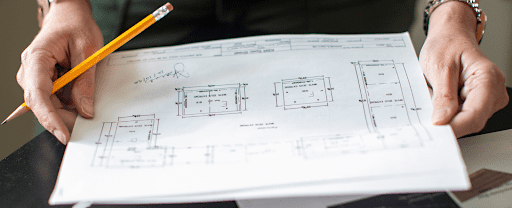You must be renovating your house to make your home more appealing to the eye and more comfortable to live in. Consider your renovation project as a business strategy or a one-of-a-kind undertaking that you are embarking on.
As a result, renovating a home can be complicated and subject to unforeseen complications and costs, thus being properly prepared is essential for a successful project. We’ve included some of our best advice from Enclave remodeling, the best home remodeling company in California for completing your project and selecting the ideal property to renovate.
1. Know what to be a lookout for
“If you looking for a home to refurbish, aim for spacious spaces, plenty of natural light, and a north-facing back yard.” Always have a building examination performed to ensure that the existing house is in good working order and that tradespeople have easy access.
2. Don’t Be Afraid to Ask for Assistance:
Home renovation contractors are experts in their profession with a wealth of knowledge and experience. This means they are a little more knowledgeable about renovation than you are, and you can ask their advice throughout the planning stage.
3. Spend Less on Surveys
Your lender will require a valuation if you need a renovation loan. If you also want a thorough building survey, ask your lender if your preferred surveyor is on their panel for valuation reports and, if not, if they could recommend someone locally who is – this will save you money by not having to pay for two separate surveys and will save you hundreds of pounds.
4. To avoid decision fatigue, work with a designer.

Enclave remodeling advises not to be bogged down by minor decisions. If you’re having trouble deciding, enlist the expertise of a designer and ask to be given only three options to choose from.
5. Reduce the number of stores you visit.
To avoid decision overload and stay on track with her budget, decide ahead of time what modifications you need to do in your home.
6. New Electricity Budget
Look for old-fashioned fuse boxes, light switches, round pin plugs, and fabric-coated flex in historic buildings that need to be updated.
7. Dampness is to be avoided.
There are a variety of causes for moisture, some of which are more expensive to repair than others. Watermarks on floors and walls are common indicators of dampness, but they are not always visible.
8. Fix Everything
The causes range from simple fixes like leaking gutters and blocked drains to inappropriate modern interventions like cement facades, concrete floors, and injected damp-proof courses, which prevent an old structure from ‘breathing.’ These are a little more expensive to fix.
9. Examine for rot.
Make sure you keep an eye out for rot, a fungus that can cause wood to deteriorate. Rot usually grows in poorly ventilated areas, such as the roof space or beneath the flooring of older homes. When you lift the carpet, look for cotton wool-like lumps and a heavy musty odor.
10. Materials that can be recycled
Many materials and rubbish will form a large mountain outside your property when your old home is renovated. Because this will eventually wind up in a landfill, it’s a good idea to donate it to a recycling center. It will not only aid in the fight against climate change, but it will also allow others, like you, to purchase recycled things for their homes.
11. Don’t Dismantle the Kitchen or Bath

Because your kitchen and bathrooms have a lot of plumbing underneath them, make sure to leave the fittings in place even if you’re renovating them. You will spend a lot more money if you move the sink even a few inches.
12. Fireplaces
If your old house has a fireplace, it can be kept and incorporated into your newly restored home. In addition, it improves the aesthetic appeal and value of your home.
13. Examine the Roof
Roof tiles that are broken or missing, flashings or underfelt that are missing, and worn pointing must all be documented. It will only cost a few hundred pounds to replace a few tiles, but if the damage is substantial, a new roof may be required.
14. Obtain a Survey that is Measured
If you’re going to do a lot of design work on the new house, make sure you have a thorough survey first (i.e. laser measures and scans of the property). It ensures that the design is precise and eliminates any uncertainty.
15. Prepare for auctions
Buying at an auction might be a difficult task. It necessitates rapid decision-making and the understanding that if you are the victorious bidder when the hammer falls, there is no going back.
It’s a good idea to attend a few auctions to gain a feel for the procedure, as well as to properly investigate the property before the auction, conducting all relevant property and land searches to avoid unpleasant surprises later.
16. Once you’ve measured twice, you’ve cut once.
The old carpenter’s saying “measure twice, cut once” holds a lot of truth. When it comes to worktops, appliances, fixtures, and flooring materials, even a half-inch change can make a big difference.
Many home improvement stores provide free measuring services; take advantage of these opportunities as much as possible to avoid costly mistakes.
17. Be Prepared for Disturbance
Remodeling is a time-consuming, dusty, and unpleasant job that disrupts your life. Make sure everyone in the house is okay with a little mess and inconvenience, and plan to finish the project in a timely manner.
18. Lighting can be used to create an atmosphere.
Changing the lighting in your home may completely transform the atmosphere. Accent lighting makes routine chores more pleasant, while large overhead fixtures make a striking design statement. To help save money on your utility bills, replace obsolete or damaged fixtures with appealing modern ones, and consider using energy-saving LED bulbs.
19. Wear Safety Equipment
Wear safety gear when working on a DIY renovation project to avoid accidents or injuries. Eye goggles, work boots, a hard helmet, and a respirator are examples of protective gear.
Earplugs protect your ears from loud construction noises, while sturdy gloves protect your hands from splinters, nails, and dirt. Wearing loose-fitting clothing that might get entangled in tools and machinery is not a good idea.
20. Obtain Adequate Coverage
Always have insurance before proceeding with any kind of repair work. If you’re taking out a loan to fund the project, your lender won’t let you borrow money unless you have insurance in place to protect the property from disasters like flooding, theft, or fire.
21. Keep your windows closed.
If the original windows – which are likely to be wood or metal – are still in situ as part of your renovation, do everything you can to save them before replacing them. They can always be fixed, even if they have considerable damage. A window should be fixed rather than replaced, according to conservationists, if at least half of the original is still present.
22. Avoid Extending Your Home
Extending your home to enhance the amount of living space is one of the most expensive renovations. This necessitates tearing down walls, laying new foundations, and a slew of other expenses. As a result, it’s best to stick to your budget and see what you can do.
23. Don’t be afraid to take up a lot of room.

Homeowners are often looking for more space, but don’t sacrifice your floor design to add extra bathrooms or closets. Home remodeling companies CA advise you that you should keep in mind that bigger is usually better when it comes to doorways, hallways, and stairwells.
24. Use Materials of Good Quality
Try to buy the best materials you can afford, as low-cost materials will detract from the overall effect of your remodeling. Style, color, durability, estimated lifespan, moisture resistance, total cost, and other considerations connected to a product’s unique function should all be taken into account when selecting materials.
25. Unknown Costs Must Be Avoided
You might have to pay certain fees to get the house back in working order, such as reconnecting the water supply or cleaning the septic tank.
Valuation costs (typically dependent on the value of the completed home) and, with some renovation mortgages, a fee to pay before each stage payment is released are two more expenditures that may surprise you.

